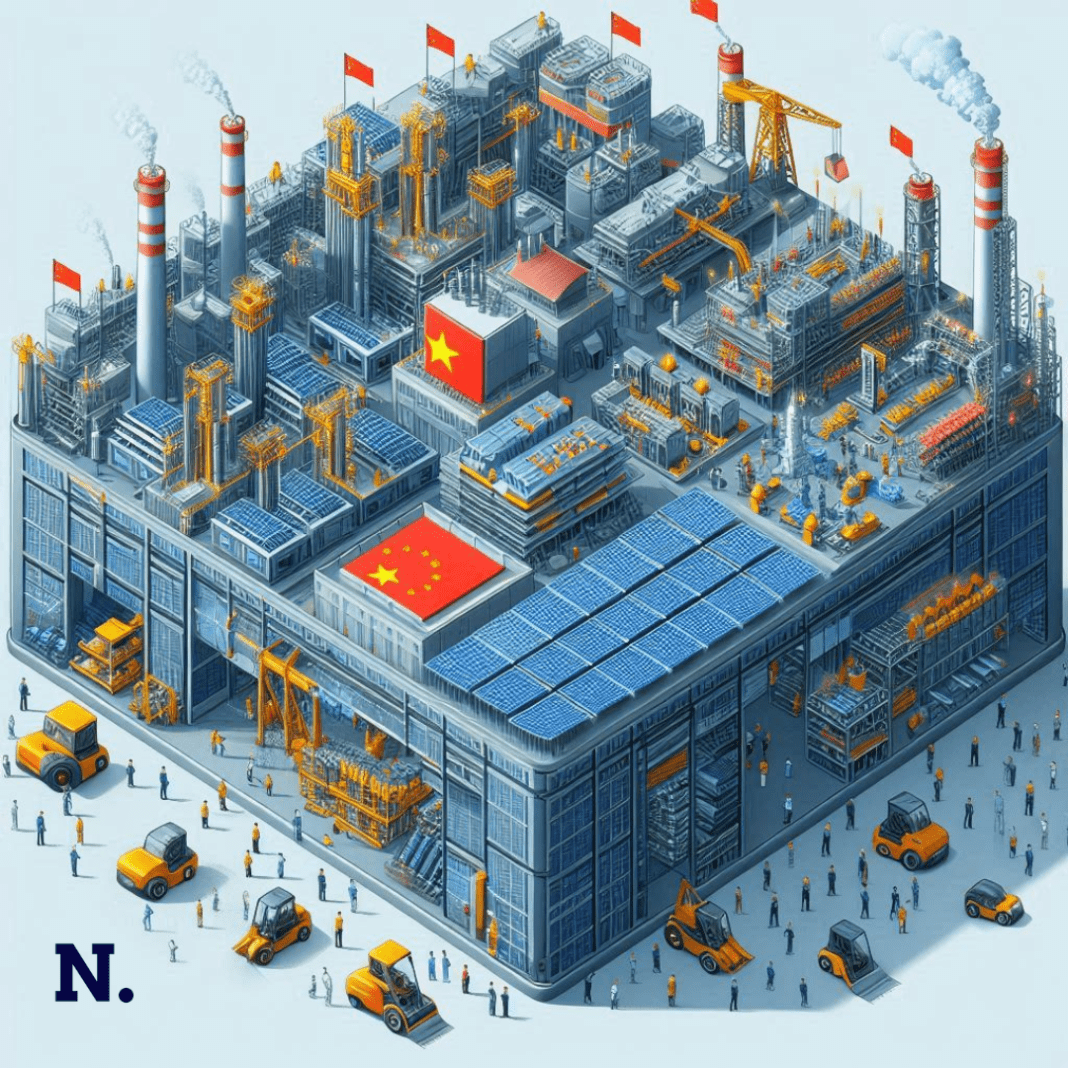China’s dominance in solar panel manufacturing is facing a significant challenge as the industry grapples with overcapacity and plummeting prices. This has prompted leading manufacturers to urge the government to take immediate action to prevent a wave of bankruptcies and stabilize the sector.
Solar Panel Supply Glut
China’s rise as the world’s leading solar panel manufacturer can be attributed to significant government incentives and policy pushes. Chinese government incentives fueled the country’s rise in solar panel manufacturing. China now holds 80% of global solar module production capacity. Analysts predict a massive increase in Chinese production capacity this year (600 GW). This exceeds global demand forecasts until 2032.
Threats due to Price Plunge
However, the relentless decline in solar panel prices is posing a major threat to the industry’s long-term sustainability. It’s the basic principle of Demand and Supply mechanics, Drop in price of inputs incentivizes more firms and individuals to enter the manufacturing avenue. Thus, Industry officials and analysts warn that fierce competition triggered by the oversupply is pushing smaller manufacturers to the brink of collapse.
The rapid expansion of production capacity in China led to a 42% price drop in solar panels in 2023. This dramatic reduction, caused by intense competition and market oversupply, has made solar energy more affordable but has strained smaller manufacturers. Concerns have also arisen about potential compromises in quality and durability. This price war influences global supply chains and international trade dynamics, significantly impacting the solar industry.
Call for Action
At the recent International Solar Photovoltaic and Smart Energy Conference, industry leaders expressed their growing concerns about the situation. Li Gang, chairman of Seraphim Energy Group, succinctly summarized the prevailing sentiment, stating that “survival” has become the primary goal for many companies.
The gravity of the situation is further underscored by the recent production cuts implemented by several companies. Statistics from the China Photovoltaic Industry Association (CPIA) reveal that between June 2023 and February 2024, at least eight manufacturers cancelled or suspended production plans for over 59 GW of capacity. This figure represents a significant portion (6.9%) of China’s total finished panel production capacity in 2023.
Calls for Government Intervention
Industry leaders are urging the government to intervene and implement measures to curb the crisis. Gao Jifan, chairman and CEO of Trina Solar and honorary president of CPIA, stressed the need for government regulation on new investments in the sector to prevent further financial losses. Duan Yuhe, president of SiNeng Electric, echoed this sentiment, calling for intervention from the Chinese state planner.
Focus on R&D
Industry executives are also proposing a shift in focus from cutthroat price competition to a more sustainable approach. Gongshan Zhu, chair of the Asian Photovoltaic Industry Association, cautioned new companies against entering the sector solely based on the allure of low prices. He highlighted the detrimental impact of overcapacity and falling prices, which have caused a 70% plunge in industry profits. Additionally, trade barriers imposed by the United States have further limited export opportunities. Zhu emphasized the importance of innovation and long-term viability, stating that “simply copying others will not be sustainable.” He pointed out that local government investments aimed solely at boosting employment have exacerbated the situation.
Speakers at the conference also acknowledged the ongoing consolidation within the industry as companies struggle to stay afloat. Fei Wu, chairman of Wuxi Suntech Power, indicated that the consolidation process had already begun. He predicted a further deterioration in the industry’s prospects this year, potentially leading to the demise of more small companies.
Looking Ahead
The Chinese solar industry stands at a crossroads. While it has established itself as a global leader in production capacity, the current oversupply and price pressures threaten to undermine its long-term viability. The industry’s future hinges on effective government intervention to regulate new investments, a shift in focus towards research and development, and a move away from unsustainable price competition. Consolidation is expected to play a role in reshaping the industry landscape, with smaller players potentially being squeezed out. The need for a sustainable and innovative approach is paramount if China’s solar industry is to overcome the current crisis and maintain its dominant position in the global market.





